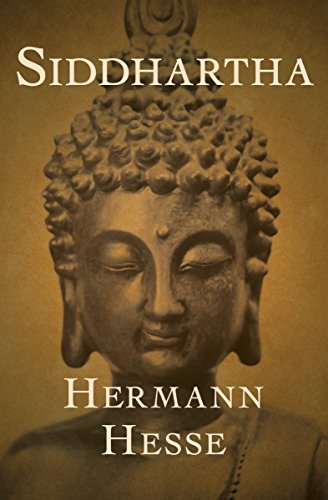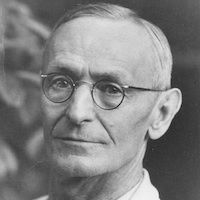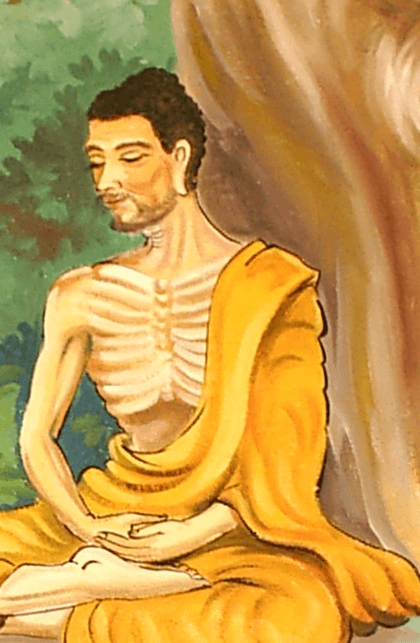Siddhartha Summary

8 min read ⌚
 An Indian Tale
An Indian Tale
There is nothing more important than finding your own path on this planet. Or, to put that into less comprehensible words, if you’re not you while you live, can you honestly say that you have lived?
Hermann Hesse’s “Siddhartha” may help you with this conundrum.
And change your life.
Who Should Read “Siddhartha”? And Why?
If you were a young man in Europe during the post-World War II years, or in the United States in the 1960s or 1970s, Hermann Hesse would have been (or was) probably your favorite author.
He was a cult figure back then and his insistence on the need for self-discovery and self-realization – coupled with an interest in Eastern mysticism and Western psychoanalysis – had the same profound (and hope-infusing) effect inspirational or mindfulness books have on the modern reader.
Hesse was Coelho before Coelho was born – except that he was a much, much better writer than him!
His status declined a bit after Sartre and the existentialists started offering young men a more systematic approach to the problem of lost hope, but even today, students all over the world first experience the importance of finding their whys and their true selves only after reading Hesse’s books.
Especially “Siddhartha.”
So, if you are a teenager or an angry young man, do yourself a favor and read this book. It’s in the public domain, so you can start reading it right now.
If you’re anything like us, your life will never be the same.
Hermann Hesse Biography
 Hermann Hesse was a German-born Swiss novelist, poet, and painter, one of the most influential writers in the ravaged post-world war. Unsurprisingly, since was “the individual’s efforts to break out of the established modes of civilization so as to find an essential spirit and identity.”
Hermann Hesse was a German-born Swiss novelist, poet, and painter, one of the most influential writers in the ravaged post-world war. Unsurprisingly, since was “the individual’s efforts to break out of the established modes of civilization so as to find an essential spirit and identity.”
Hesse initially made his name as a poet, but his popular success came with his first novel, “Peter Camenzind,” a book which allowed him to work exclusively as a writer.
Appalled by the First World War, Hesse moved to Switzerland, from where he authored few essays and proclamations denouncing nationalism and the war.
After few psychoanalytical sessions, in 1919, he published “Demian” which was a resounding success in the German-speaking world. A visit to India followed, which gave birth to “Siddhartha” in 1922.
In 1927 he published “Steppenwolf” and spent the next decade and half working on his magnum opus, “The Glass Bead Game” which was published during the Great War in Switzerland.
In 1946, Hermann Hesse won the Nobel Prize in Literature for “his inspired writings, which while growing in boldness and penetration, exemplify the classical humanitarian ideals and high qualities of style.”
Plot
“Siddhartha” shares one interesting trait with “Monty Python’s Life of Brian.”
Namely, contrary to popular opinion, it is not an artistic work about the central figure of a religious movement, but about another man whose life story shares some similarities with the more famous religious leader.
In Hesse’s case, things are even more complicated, since this man shares Buddha’s birthname as well – namely Siddhartha.
Yes, that’s how Buddha was called before he was famous.
However, just like Brian and Jesus, Hesse’s Siddhartha and history’s Siddhartha live in the same time and in about the same area.
Moreover, they share a similar background.
Siddhartha, as the handsome young son of the Brahman, enjoys almost all the riches and beauties the world has to offer.
But as it often happens to a character in a Hesse work, at one moment he realizes that life is treating him too kind and that reality is much more complicated than enjoyment.
So, he leaves his home, hoping to get some spiritual illumination by joining the Samanas, a group of travelling ascetics.
Unsurprisingly, their guide to the good life is simple: enlightenment is the product of deprivation.
So, accompanied by his best friend, Govinda, Siddhartha renounces all possession and starts fasting and meditating.
Three years pass and “some news, a rumor, a myth” reaches them after being retold many times:
A man had appeared, Gotama by name, the exalted one, the Buddha, he had overcome the suffering of the world in himself and had halted the cycle of rebirths. He was said to wander through the land, teaching, surrounded by disciples, without possession, without home, without a wife, in the yellow cloak of an ascetic, but with a cheerful brow, a man of bliss, and Brahmans and princes would bow down before him and would become his students.
Or, if you want a visual representation of the guy just described:

Yes – by the third chapter of the first part of “Siddhartha,” our Siddhartha learns about the real Siddhartha.
(Men, writers need to think of different names for different characters!)
Naturally, he wants to meet him and soon he and Govinda have an opportunity to do exactly that.
They listen to one of Buddha’s teachings and Govinda is amazed by it, so he decides to stay among Buddha’s followers.
Siddhartha – not so much.
And he goes as far as telling Buddha himself this when he happens to meet him the next day.
All great, he says, but there’s a small error, something I don’t understand about your teaching and yada-yada-yada don’t you think that talking about gaps and unities in the same breath is a bit contradictory? And that not everybody can reach personal fulfillment by following the same general steps?
Buddha – boasting with the original Buddha’s brain – says something along the lines “You know what, you may be right. Follow your own path. But beware of too much wisdom.”
Govinda’s path is incidentally Buddha’s, so Siddhartha is now alone.
He reaches a river and meets Vasudeva, a ferryman who helps him cross the river. Since Vasudeva is one of the 108 names of Krishna, we, the readers, might have just crossed a river as well, moving from the land of Buddhistic ascetism into the kingdom of hinduist hedonism.
So, it’s Part 2, the absolute opposite of deprivation.
So, yeah – there’s sex in it.
A lot of it, in fact.
And it’s all because of a girl called Kamala, a beautiful and famous courtesan.
Now, if you are a courtesan, you wouldn’t expect a wandering ascetic to come out from the forest at your doorstep, thank you for being beautiful, and ask you to be his friend and a teacher, for he knows “nothing yet of that art which you have mastered in the highest degree.”
Even so, that’s exactly what happens to Kamala!
Her response?
More or less the same Nicole Kidman gave Ewan McGregor in “Moulin Rouge”: earn some money and come back then.
Now, what did you expect, Siddhartha? Sex lessons for free? Oh, you naughty, naughty Siddhartha!
Anyway, Siddhartha – remember: the guy who renounced everything to become an ascetic a while ago – now does the exact opposite.
Kamala directs him to Kamaswami, a wealthy merchant under whose mentorship Siddhartha learns the secrets of business. Moreover, he even surpasses him, since the patience he has acquired during his years as a Samana makes him the perfect most rational businessman you can ever imagine.
Now that he is rich, Siddhartha goes back to Kamala and – well, enjoys the immediate joys of sexual pleasure. Otherwise, it would be difficult to explain how the couple gets a child, named – surprise! surprise! – young Siddhartha.
(Guys, you have to try harder. It’s not even that difficult: there are, literally, billions of names available!)
You know what happens next, right?
Siddhartha grows sick with sex and money (by the way, he becomes a gambler, as well) and decides to return to the river. There, he reunites with Vasudeva and starts to live a humbler life choosing the river to be his teacher.
We would have loved such a teacher in our high school years as well! Always around, never boring, and unable to grade our pretty bad essays with anything other than a “bllgh kshhhhh blllgggh kshhhh blllllgggghh.”
Siddhartha Epilogue
Time passes and Kamala, travelling with her son to see Buddha at his deathbed (did we forget to mention: she’s become a Buddhist apprentice in the meantime as well!), is bitten by a snake right next to Siddhartha’s river.
Where else of all the places in the seventh-largest country in the world?
Kamala dies, so Siddhartha takes the young Siddhartha under his own wing.
However, he’s either not very good at parenting or young Siddhartha is not very good at being a good son, so, after some time, young Siddhartha escapes from him.
Siddhartha badly wants to find him, but Vasudeva tells him something modern parents will have a hard time understanding: leave him be.
Meaning: once you wanted to walk your own path, now your son is doing the exact same thing.
This alleviates Siddhartha suffering and, suddenly, he is overwhelmed by a jubilant mood which stems from the realization that even pain is an illusion.
Vasudeva says my work here is done, which, in his language means “I’m going into the forests, I’m going into the oneness.” (But why, Vasudeva, why?)
Siddhartha, finally fulfilled, becomes what Vasudeva was: an enlightened ferryman.
And, of course, his first student is Govinda, who comes to the river to hear some words of wisdom from the wise ferryman everyone is talking about.
And, after a brief discussion, he reaches some enlightenment as well:
Deeply, Govinda bowed; tears he knew nothing of, ran down his old face; like a fire burnt the feeling of the most intimate love, the humblest veneration in his heart. Deeply, he bowed, touching the ground, before him who was sitting motionlessly, whose smile reminded him of everything he had ever loved in his life, what had ever been valuable and holy to him in his life.
Conclusion: Siddhartha, the protagonist of Hesse’s story, may be better at this than the real Siddhartha, who you know by the name of Buddha.
Like this summary? We’d like to invite you to download our free 12 min app, for more amazing summaries and audiobooks.
“Siddhartha PDF Quotes”
Seeking means: having a goal. But finding means: being free, being open, having no goal. Share on X I have always thirsted for knowledge, I have always been full of questions. Share on X They both listened silently to the water, which to them was not just water, but the voice of life, the voice of Being, the voice of perpetual Becoming. Share on X Dreams and restless thoughts came flowing to him from the river, from the twinkling stars at night, from the sun's melting rays. Dreams and a restlessness of the soul came to him. Share on X Most people... are like a falling leaf that drifts and turns in the air, flutters, and falls to the ground. But a few others are like stars which travel one defined path: no wind reaches them, they have within themselves their guide and… Share on XOur Critical Review
“Siddhartha” reads almost like a poem: it’s lyrical and rhythmical, it’s breathtakingly beautiful and imaginatively enriching.
In other words, the plot doesn’t do justice to its purpose and quality. Read it as if you’re reading a poem: out loud and again and again.
As we said above: especially if you’re young man.
Also published on Medium.








